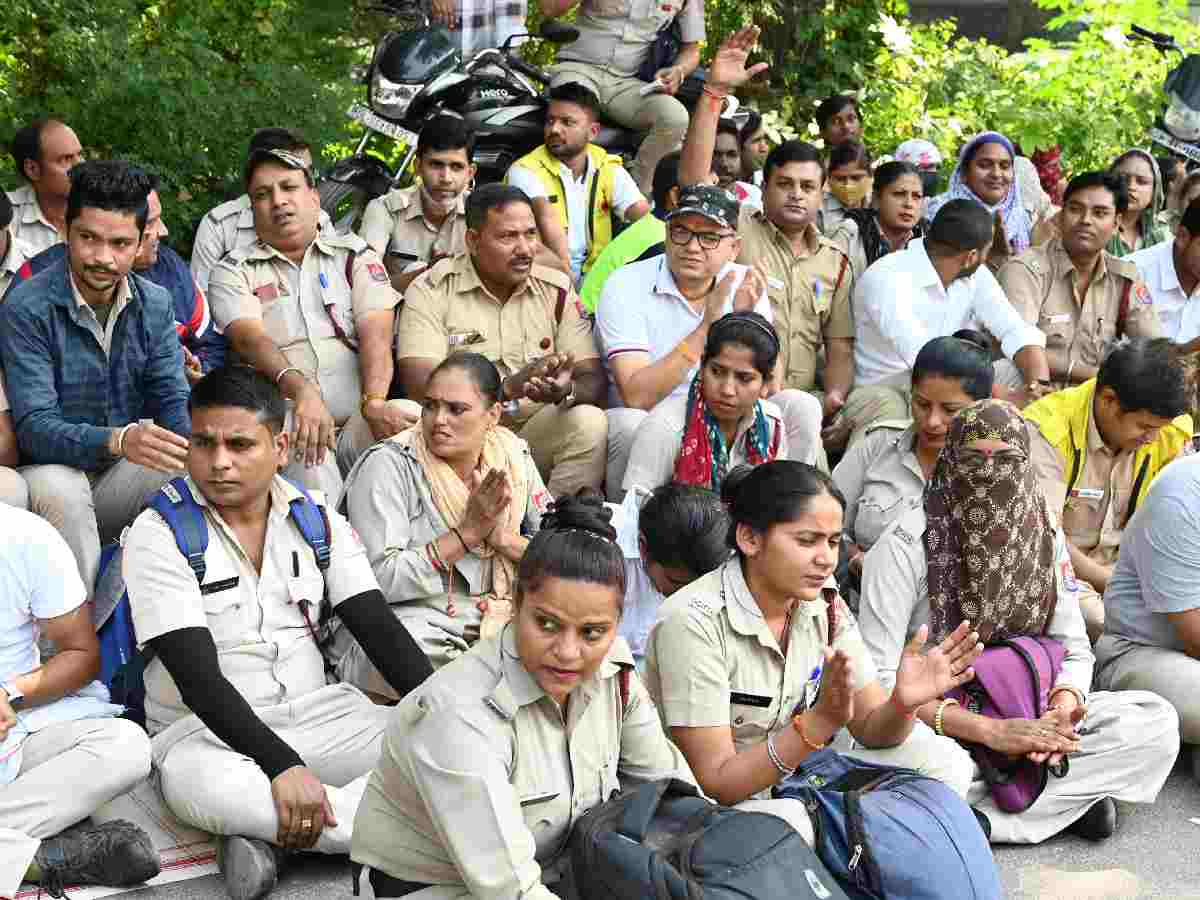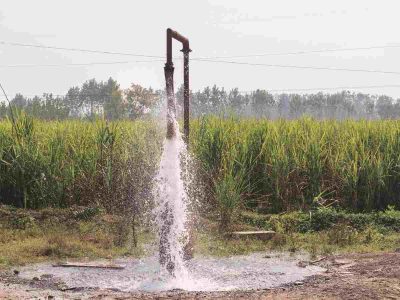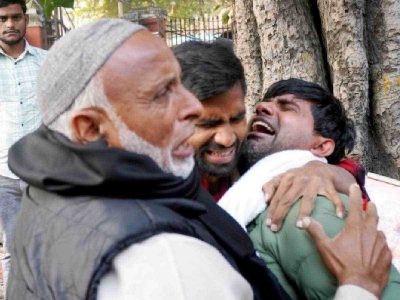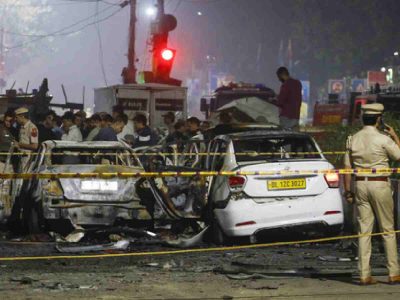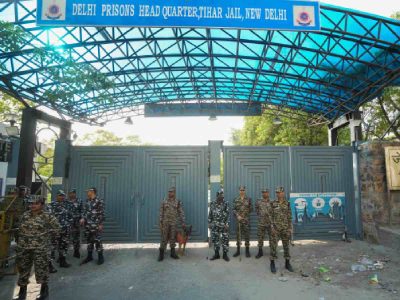Instead of appointing trained professionals or filling vacant posts in government departments dedicated to pollution control, Delhi Lieutenant Governor Vinai Kumar Saxena and Delhi Chief Minister Atishi have approved deploying 10,000 Civil Defence Volunteers (CDVs) and Bus Marshals at pollution hotspots. Environmentalists view this move as a temporary fix to a long-standing issue.
Highlighting the employment provided to the CDVs, Raj Niwas and the Delhi Government are resorting to short-term, ineffective measures to curb the city’s pollution crisis.
On October 24, Raj Niwas announced that the Civil Defence Volunteers (CDVs) dismissed by former Chief Minister Arvind Kejriwal last October would now be redeployed to combat air pollution from November 1, 2024, for four months. According to the statement, “LG Saxena also advised the Delhi Government and Chief Minister to come up with a concrete scheme in the interim for their future engagement, after following due process, so that they are not misled again and do not face loss of livelihood during the interim period of four months.”
The Aam Aadmi Party (AAP) Government endorsed the reinstatement of these 10,000 Civil Defence Volunteers and Bus Marshals to join the anti-pollution drive. “These volunteers and marshals will be deployed within a week to join the fight against pollution,” stated Chief Minister Atishi. She added, “The appointment process for bus marshals will start on November 18, and the Delhi Government will soon send a proposal for their permanent appointment to LG Saxena.”
Atishi clarified that these volunteers would be tasked with monitoring pollution hotspots, curbing open burning, managing construction waste to reduce dust, addressing illegal diesel generator use, and following up on complaints on the Green Delhi app. “For the next four months, bus marshals and civil defence volunteers will contribute to the fight against pollution. Call-out notices for the marshals will be issued from November 18, and they can proceed to register at different DM offices. Deployment for control efforts will follow within 2-3 days of registration,” she explained.
However, environmental experts express concerns, questioning the long-term commitment of the government to effectively address air pollution. The appointed volunteers, with minimal training and limited authority, may struggle to deliver meaningful results.
Environmental activist Bhavreen Kandhari voiced her apprehensions: “Recasting ‘Bus Marshals’ as ‘Pollution Marshals’ raises significant questions about both effectiveness and accountability. Tasking volunteers with limited training and authority to monitor and report serious environmental infractions—such as illegal construction, open waste burning, and misuse of diesel generators—indicates a temporary measure that fails to address the root of the problem.”
“Citizens already highlight persistent pollution violations on social media with minimal response, and without specialised training or enforcement power, these marshals may struggle to bring about substantial change. Effective pollution control demands professionals with technical expertise, a responsive complaint mechanism, and the legal authority to take swift action,” she added.
With over 45% of positions in the pollution control board unfilled, Kandhari questions the focus on temporary measures: “Shouldn’t the focus be on hiring skilled professionals or expanding the pollution board’s capacity, rather than temporary measures with uncertain impact?”
This strategy, Kandhari added, seems to bypass the structural reforms needed to address Delhi’s escalating air quality crisis. Without sustained, professional intervention, she argues, these short-term measures merely scratch the surface of the city’s serious pollution issues.
Environmental campaigner Vimlendu Jha echoed these concerns, describing the approach as “a band-aid solution to the grave pollution crisis the capital faces today. High on optics, this is not going to yield any concrete pollution mitigation results, as the sources of pollution and the challenges around it can’t be addressed by civil defence volunteers holding anti-pollution placards. Additionally, these volunteers will be subjected to higher levels of pollution, exposing them to vehicular emissions, which poses a public health threat as well.”
Impact on Civil Defence Volunteers’ health
Dr Kuldeep Kumar Grover, consultant pulmonologist at CK Birla Hospital, Gurugram, shed light on the health risks faced by these volunteers due to exposure to vehicular pollution.
“While gasoline-powered vehicles primarily emit hydrocarbons and carbon monoxide, diesel-powered vehicles release higher levels of nitrogen oxides (NOx) and particulate matter. These pollutants are harmful to human health and contribute significantly to climate change,” explained Dr Grover. “Burning gasoline and diesel produces by-products that include carbon dioxide (CO₂), a key greenhouse gas.”
He detailed the health implications of exposure to such pollutants: “Both short- and long-term exposure to air pollution can lead to a wide range of diseases, including stroke, chronic obstructive pulmonary disease (COPD), trachea, bronchus, and lung cancers, aggravated asthma, and lower respiratory infections. Mental stress and unexplained anxiety are also directly linked to prolonged exposure to urban air pollution.”
Dr Grover also discussed various pollution control methods: “Using efficient engines that emit less smoke, high-quality fuels, and lead-free petrol are essential steps. Compressed natural gas (CNG) is a cleaner alternative to both diesel and petrol.” He highlighted technologies like Exhaust Gas Recirculation (EGR), catalytic converters, and traffic management systems as effective strategies to reduce vehicle emissions.
Also Read: Crackdown on old vehicles: Over 5,000 automobiles seized to curb pollution
For monitoring emissions, Dr Grover outlined existing measures: “Emission testing at authorised centres ensures compliance with pollution standards, while sensors in vehicles can detect emissions and notify owners if pollutants exceed thresholds. Remote sensing technology and cameras can estimate pollution by analysing vehicle flow and speed, although direct assessment is challenging due to limitations in accessing fuel type and registration data.”
“Addressing vehicle emissions through better technologies, cleaner fuels, and stricter emission controls is essential for improving public health and combating climate change,” he concluded.

